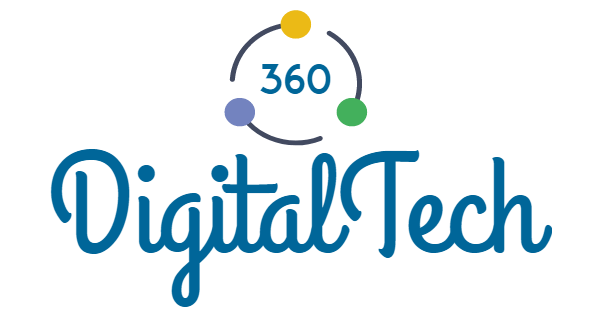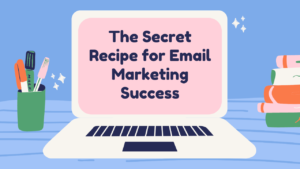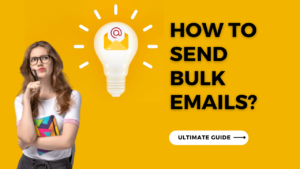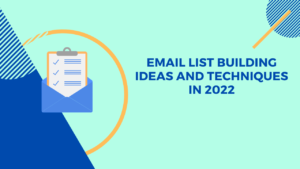Email automation is mandatory for a modern marketing team. If you are not using email automation strategies, you are losing money. Email automation helps you find your prospects and capture your customers. With automation, you can create a series of personalized emails for each individual based on buying patterns and grow your business without sacrificing that special personal touch.
Email marketing is the channel with the highest ROI. Sending newsletters to your subscribers is a must, but you can’t stop here. Email marketing automation is much more than sending mass emails. Email marketing is nothing without email automation. If you don’t create autoresponders, you’re not getting all the juice out of this channel.
I’m serious, you need to start using email automation NOW. If you don’t know what it is or how to do it, don’t worry, that’s why this step-by-step email automation guide can help you to learn how to create automation emails.
What is email automation and how does it work?
First of all, I want this to be very clear to you: Email automation is NOT sending newsletter emails.
A newsletter is an email that you send to a list of subscribers from time to time. You are the one who sends it every time via MailChimp, MailRelay, Sendblue, or any other email provider.
Email automation is an email that is automatically sent to a particular individual when they perform an action or event. An email that you only create once but that, every time a person does the action you have defined (fires a trigger), it will be sent automatically. Without losing time.
In case it is not clear enough for you yet, let’s look at a very simple example.
On any website or blog, every time someone subscribes to a newsletter, the company will send you a welcome email by telling a little more about who they are. But they don’t do it individually. But they created these mailers a long time ago and send it once the user subscribes to the newsletter. It’s called autoresponder emails or automated campaigns or drip campaigns.
Thanks to email automation, once you activate email automation it will trigger based on the condition which you define. The relevance of the email and the timing will decide the success of your email automation campaign.
Pro tip: you already know the importance of having a good subscriber list, right? This means having quality leads. It is not worth having a list of 10,000 subscribers if 80% of them never open one of our emails.
That is why it is necessary to clean your email list. If a person has not opened any of your emails for 3 months, send them an email asking if they want to continue receiving your emails or they want to unsubscribe.
Why you should use email automation?
Can you imagine all the manual emails work that would be if every time we see that someone has signed up, we have to enter MailChimp, MailRelay, Sendblue, or any other email provider, write a welcome email and send it?
It consumes a lot of time and effort. With Email automation marketer can save time and utilize it for something more productive work than manual work.
The automated campaign that is fully personalized and highly relevant to the reader. Consequently, its open and click-through rate is much higher than that of any newsletter.
Top 15 Benefits of email automation
1. Relevant content delivered at the right time to the right people
2. Higher response rate from potential customers
3. Ease of lead nurturing and converting leads into customers.
4. Much deeper customer relationships
5. High levels of brand recognition
6. Save time and cost for lead generation activities
7. Take advantage of segmentation and lead scoring
8. Keep your list neat and clean
9. Gives you more free time for creative and strategic activities
10. Provide a detailed report that helps you to personalize communication
11. Boost sales and revenue
12. Increase website traffic
13. Easy to integrate your website with an email automation system
14. Notify the sales team about hot leads, warm leads, and cold leads
15. Providing more value to your audience
What kind of events trigger automation?
There are many events or triggers that trigger an email. That is many actions that the user performs that cause us to send them an email automatically. Top 20 Marketing Automation Triggers to Run a Successful Campaign
Come on, let me give you some examples:
- Welcome email when someone subscribes to your list
- Email when a user abandons the shopping cart, to convince them to continue with the purchase
- The sequence of emails to create a sales funnel and get to sell a product
- Email reminder of appointments (for example, from the doctor or a webinar you have signed up for).
- A small survey sent after a time after buying a product from your store, to know the customer’s opinion.
- Survey to know what content your subscribers want to receive. Depending on their response, an automated email sequence is sent to them with the content they have requested.
- Emails are sent every few days with lessons on a specific topic.
- An email with your latest post on the blog.
- Depending on the email automation tool you have, you can do this example or not.
- When a visitor comes to your website, who is already a subscriber of your brand, browses through a specific section, with specific content. For example, visit the section of shorts for men, you send an email with the latest offers of shorts for men.
Can you think of more examples of email automation? Leave me a comment below, so that we will expand the list.
Email Marketing terms and words you should know
Before getting started with your email automation campaign, you need to familiarize yourself with some email marketing terms:
- Subscription: when a person signs up on your list to start receiving your emails.
- Double opt-in: when to subscribe to your email list, they need to confirm the subscription via email.
- SPAM: emails sent to people who have not subscribed. Don’t be SPAM!
- Unsubscribe: a person who wants to stop receiving your emails. It’s a very sad moment, but it can be overcome.
- Trigger: an event that causes something to happen (for an email to be sent).
- Sequence: a set of emails that are sent automatically (with days in between each of them) after an event occurs.
- CTR (click-through rate): percentage of clicks on your newsletters. It is calculated by dividing the number of clicks by the number of emails sent.
- Lead nurturing: The process in which, through email automation and a good inbound marketing campaign, you turn a subscriber into a buyer.
Basic steps to create an email automation strategy
Come on, let’s start putting together an email automation strategy with simple steps.
Step 1: Set some goals. What do you want to get?
Step 2: Create a plan. Choose the number of emails you want to send, when you want to send them (that is, what action will activate them), and the content of each one.
Step 3: Choose the type of email provider that suits you best. Depending on whether you are a small or large company, you will find plans in any marketing automation tool that suit your budget and needs.
Step 4: Create the sequence of emails and choose the triggers within the tool to get everything ready.
Step 5: Test that everything works perfectly and that the emails are sent when a trigger occurs.
Step 6: Always measure and analyze. Only then you can optimize your email marketing strategy and ROI (return on investment).
What should marketing automation tools have?
- Email marketing: sending emails to a subscriber list.
- Email sequence or workflow builder.
- Landing page creator (landing pages) to collect emails from your users.
- Creator of web forms to collect emails.
- Section analysis of emails and user interactions.
- Section to create reports.
- CRM with a database of leads.
- Payment integration to collect money when you sell something to your subscribers.
- Program management to create and manage marketing campaigns in different channels.
- Lead nurturing to convert leads into customers.
- Lead scoring, to know where our leads are according to a score that we previously decided.
- Third-party API and being able to integrate other tools.
- Online behavior tracking to track the activity of subscribers on your website and be able to act on their actions.
- Content creation, that is, the creation of personalized content.
- Social media marketing: planning, programming, publication, and analysis of the content on social networks.
- Remarketing actions.
Top 50 Best Marketing Automation Or Email Automation Tools for 2021
Some examples of email automation or marketing automation tools you can use:
1. HubSpot
2. Marketo
3. Salesforce Pardot
4. Oracle Eloqua
5. MailChimp
6. GetResponse
7. ConvertKit
8. Aweber
9. SendGrid
10. Zoho Campaigns
11. Drip
12. Omnisend
13. ActiveCampaign
14. Campaign Monitor
15. Automizy
16. Constant Contact
17. Act-On
18. Customer.io
19. SendX
20. SendPulse
21. MailerLite
22. Mailjet
23. Moosend
24. Mailrelay
25. EmailOctopus
26. Benchmark Email
27. VerticalResponse
28. MoonMail
29. MailGenius
30. Infusionsoft
31. Ontraport
32. dotmailer
33. SendBlaster
34. Mailigen
35. iContact
36. Sender
37. Sendwithus
38. Mad Mimi
39. Cake Mail
40. Reach Mail
41. Pepipost
42. Sendicate
43. Campayn
44. ExpressPigeon
45. Red Cappi
46. EngageBay
47. GroupMail
48. Mautic
49. Pabbly
50. Elastic Email
However, more and more email marketing tools (such as HubSpot or Marketo) are offering marketing automation services. So, if your budget is very tight, I advise you to start with GetResponse.
As a marketer, you sure have a thousand things to do a day and little time and resources, right?
The automation of emails is the solution to almost all your problems. Do you want to grow your business? Use autoresponders or email automation or Drip campaign.
Today we have seen everything you need to know to create an email automation strategy and start making money.
If you haven’t created an auto-responder yet, do so now. Don’t waste your time anymore. Choose a tool that meets your expectations and you can afford it and start creating sequences that are activated with triggers. I assure you that you will not regret it.
Now it’s up to you: which email automation examples do you think works best? Which ones have you used?




